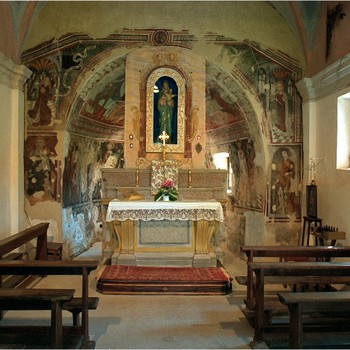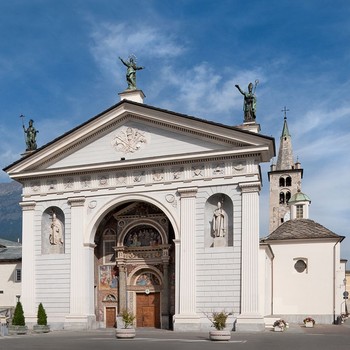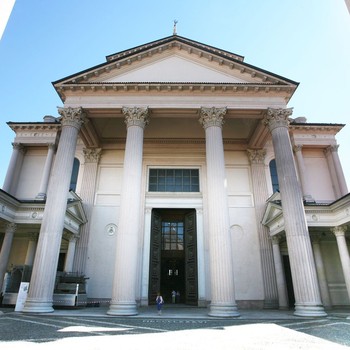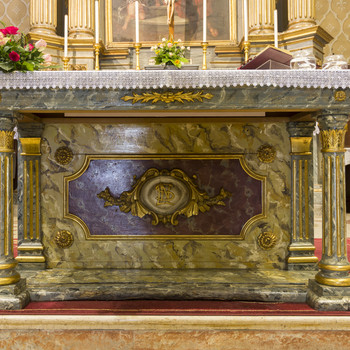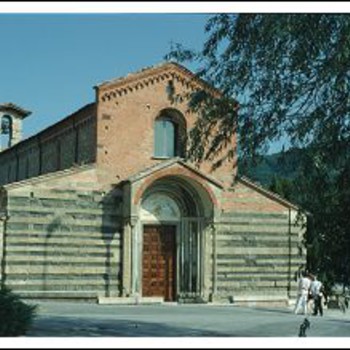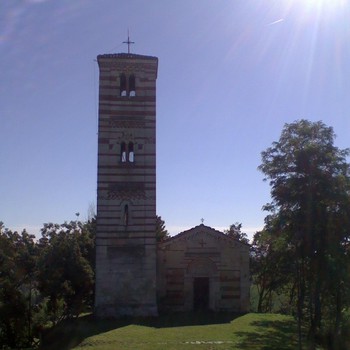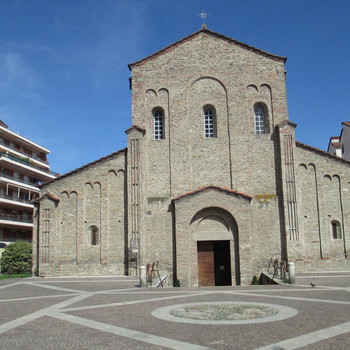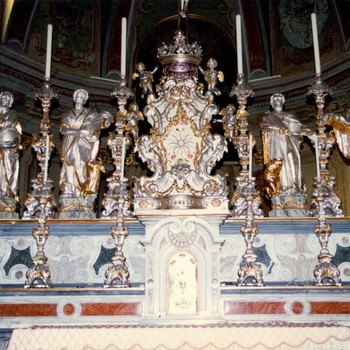Cappella di Sant'Anastasia
Diocesi di Mondovì ( sec. X; XV )
Cappella dell'XI secolo, posta su un cucuzzolo delle Langhe, custodisce affreschio del Quattrocento.
Cathedral of Santa Maria Assunta
Diocesi di Aosta ( sec. IV; XI; XIX )
Founded at the end of the 4th century, Aosta Cathedral was rebuilt seven centuries later. It was further modified by major refurbishments in the 15th–16th and 19th centuries.
Cathedral of San Giusto
Diocesi di Susa ( sec. XI )
Cathedral of San Giusto, Diocese of Susa. Founded in 1027, it was a monastery until 1749, when it became a collegiate church, and then a cathedral in 1772. The building is in Romanesque style, with a Latin cross plan.
Cathedral of Santa Maria Assunta
Diocesi di Novara ( sec. IV; XX )
Novara Cathedral is a complex building, whose 19th-century structure designed by Alessandro Antonelli features details from the Early Christian and Romanesque periods, while the interior houses a wealth of artworks.
Chiesa di San Giacomo Maggiore Apostolo
Diocesi di Pinerolo ( sec. XII; VIII; XIX )
Si tratta della più antica chiesa parrocchiale esistente in val Pellice. Costituisce il punto di riferimento della fede cattolica nel comune, Luserna San Giovanni, che nei secoli passati ha prestato il suo nome alla valle.
Chiesa Collegiata dei Santi Pietro e Orso
Diocesi di Aosta ( sec. V; XII; XVIII )
Sorta fuori dalla cinta muraria dell'antica Augusta Praetoria, la Chiesa Collegiata dei Santi Pietro e Orso è la chiesa cittadina più importante dopo la cattedrale. E' annesso il celebre chiostro con capitelli istoriati del XII secolo.
Chiesa dei Cappuccini
Diocesi di Tortona ( sec. XII; XVII )
La più antica pieve della Valle Staffora si trova appena fuori dall'abitato di Varzi. La sua costruzione risale alla fine del XII secolo.
Chiesa dei Santi Nazario e Celso di Mairano
Diocesi di Asti ( sec. XI; XII )
Chiesa romanica del XI-XII sec. parzialmente ricostruita nel XX sec.
Chiesa dei Santi Pietro e Paolo
Diocesi di Tortona ( sec. XII; XVI; XVII )
La chiesa parrocchiale dei Santi Pietro e Paolo, a Castelnuovo Scrivia, risale al XII secolo. La facciata conserva il portale originario, datato 1183 e firmato dal magister Albertus.
Chiesa dell'Addolorata
Diocesi di Acqui ( sec. XI; XVIII; XX )
Basilica paleocristiana poi monastero benedettino, fu riportata nel secolo XX alla ipotetica forma originale.
Chiesa della Madonna della Neve
Diocesi di Torino ( sec. XI; XIII )
La chiesa parrocchiale della Madonna della Neve fu costruita tra il 1648 ed il 1650. Stando ai documenti notarili e a quanto riportato delle “Memorie del borgo Salsasio”
Romanesque

Significant expressions of Romanesque are to be found in Piedmont. Above all in architecture, this is the art that continued the great building traditions of Rome, following the depression of the Dark Ages. The buildings erected after 1000 still reveal hesitant engineering, with a static quality that emphasizes the walls while the openings allowing light to enter are sparse and small. The master masons, stonecutters and sculptors came from the lakes: the Campionesi from Lugano and the Comacini from Como. These craftsmen spread the language of the renaissance of the art of building. Lombardy led the way in Europe, with nearby Piedmont imitating pace and style, although the assertion of Romanesque was tardy, interspersed with Gothic style features. Important examples are Casale cathedral, Vezzolano abbey and the sturdy Consolata belfry.



